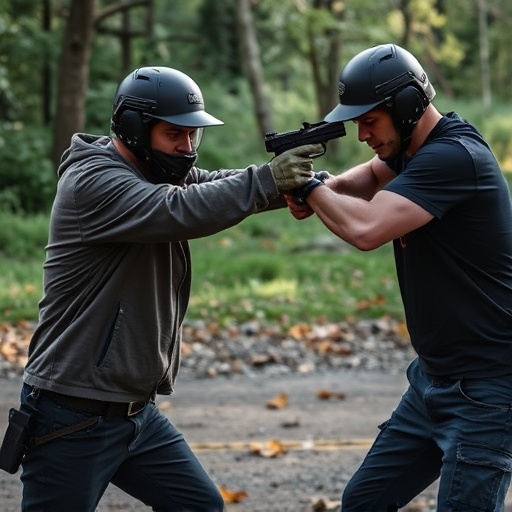Rechargeable Stun Gun Battery: What to Consider When Buying
When purchasing a stun gun, focus on understanding battery types and lifespans. Lithium-ion (Li-ion)…….
When purchasing a stun gun, focus on understanding battery types and lifespans. Lithium-ion (Li-ion) batteries offer high energy density and longevity (1-3 years), while Nickel-Metal Hydride (NiMH) batteries are environmentally friendly but have lower energy density. Avoid extreme temperatures to maximize battery life. Consider rechargeable options for sustainability and cost savings, as traditional disposable batteries contribute to waste. Compare specifications like energy density, charging times, and backup power needs to make an informed decision about what to look for when buying stun guns.
When purchasing a stun gun, understanding its rechargeable battery specifications is crucial. This comprehensive guide delves into the key factors that matter—from battery types and lifespan to charging speed and safety features. We explore traditional versus rechargeable batteries, different chemistries like Li-ion and NiMH, and how battery capacity influences performance. Additionally, we highlight fast charging, wireless options, smart charging technologies, and safety measures against overcharging, overheating, and more. Remember that when buying stun guns, these specifications are what you should look for to ensure reliability and peace of mind.
- Battery Types and Lifespan
- – Comparison of traditional batteries vs rechargeable batteries
- – Different battery chemistries (Li-ion, NiMH) and their advantages/disadvantages
Battery Types and Lifespan

When it comes to rechargeable stun gun batteries, understanding battery types and lifespan is crucial for making an informed purchase decision. Look for stun guns that utilize lithium-ion (Li-ion) batteries, as they are known for their high energy density and longer cycle life compared to other options. Li-ion batteries deliver consistent power and can withstand hundreds of charge cycles, ensuring your stun gun remains reliable over time.
The lifespan of a stun gun battery varies based on several factors, including the quality of the battery, usage frequency, and charging practices. On average, a high-quality Li-ion battery can last between 1-3 years before requiring replacement. Proper care, such as avoiding extreme temperatures and complete discharge, can extend the life significantly. Always check what to look for when buying stun guns, focusing on clear specifications regarding battery types and expected lifespan to ensure you get a reliable and long-lasting device.
– Comparison of traditional batteries vs rechargeable batteries

When purchasing a stun gun, one key aspect to consider is the type and capabilities of its power source—traditional disposable batteries or rechargeable batteries. Traditional batteries are often the go-to option due to their convenience and immediate availability. They require no charging time and can be easily replaced, making them suitable for users who need a quick and reliable backup. However, these single-use batteries contribute to significant waste and can add up in cost over time.
Rechargeable batteries, on the other hand, offer a more sustainable and cost-effective solution. What to look for when buying stun guns includes a rechargeable battery that supports frequent charging without sacrificing performance. Modern rechargeable batteries have advanced to provide stable voltage and current, ensuring your stun gun functions optimally. This eco-friendly approach not only reduces waste but also appeals to environmentally conscious users. Moreover, having a rechargeable stun gun means never running out of power at a crucial moment, making it a reliable choice for those who rely on their stun guns regularly.
– Different battery chemistries (Li-ion, NiMH) and their advantages/disadvantages

When considering what to look for when buying stun guns, one of the critical components is the battery. Common options include Lithium-ion (Li-ion) and Nickel-Metal Hydride (NiMH). Li-ion batteries offer several advantages, such as a higher energy density, longer lifespan, and faster charging times compared to NiMH alternatives. They’re also lighter, making them a popular choice for compact stun guns designed for easy carry. However, Li-ion batteries can be more sensitive to temperature extremes and may require specific charging protocols to maintain performance over time.
On the other hand, NiMH batteries are known for their cost-effectiveness and environmental friendliness due to being recyclable. They provide good power output and a decent cycle life, making them suitable for frequent users who need reliable backup options. However, NiMH batteries tend to weigh more and have lower energy density than Li-ion, resulting in slightly longer charging times. When comparing rechargeable stun gun battery specifications, understanding these differences can help buyers make informed decisions based on their needs and preferences.
When considering what to look for when buying stun guns, battery specifications are a crucial factor. Rechargeable batteries offer a sustainable and cost-effective solution compared to traditional disposables. Look for stun guns with high-quality Li-ion or NiMH batteries, known for their longevity and performance. These rechargeable options provide numerous cycles, ensuring your stun gun remains reliable over time. By choosing a model with an efficient battery, you gain peace of mind and the convenience of always being prepared, making it an essential aspect to consider when purchasing a stun gun.


